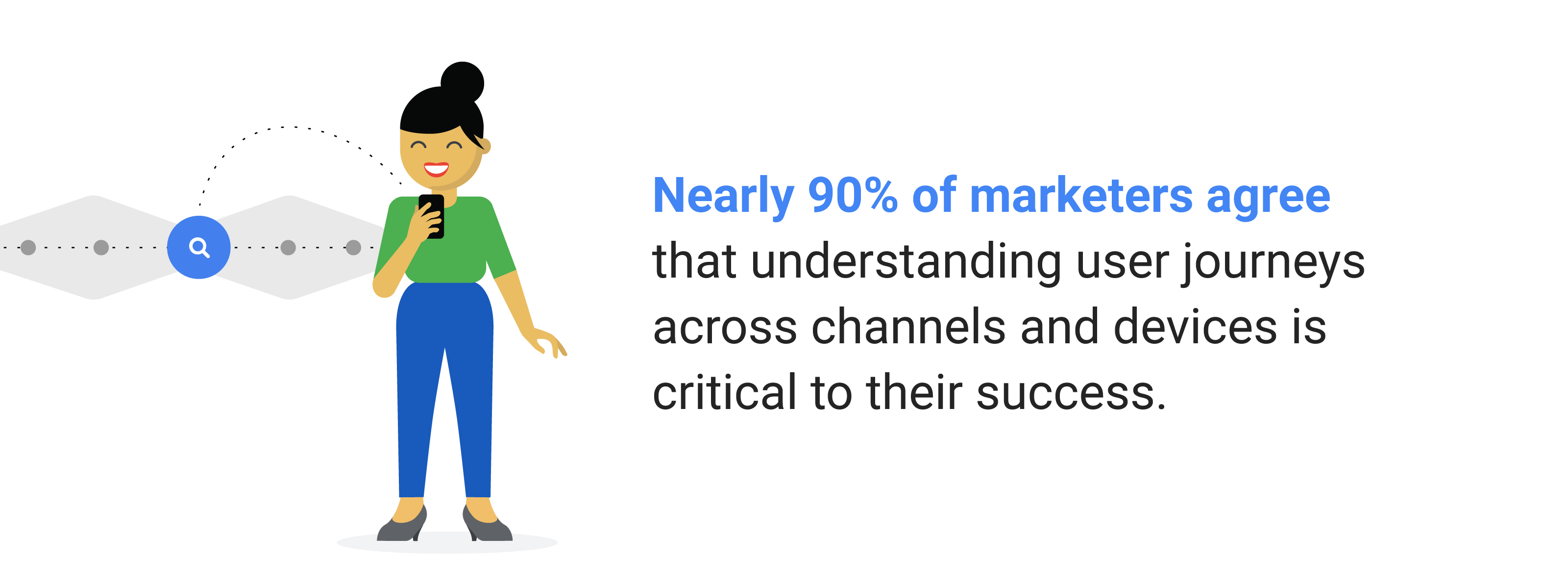As a marketer, one of your main priorities is getting to know your customers and building relationships with them. These days, that would seem to be a fairly easy task. After all, customers in a digital world generate rivers of data and intent signals.
But making sense of the data isn’t always the easiest thing in the world. Sometimes there’s just too much of it, and filtering out the noise to find what matters becomes a challenge. Other times, the signals are weak and it’s hard to connect the dots.
All the data in the world won’t lead to business growth if you can’t mine it successfully for insights. What that takes is smart data analysis — and the right approach and tools to carry it off.
By bringing data together, businesses are better able to understand and respond to their customer needs — and that leads to growth.
Unify then measure
To succeed in today’s challenging and competitive environment, marketers must break down the silos across departments, teams, and channels to consolidate data and see a unified view of the customer. By bringing data together, businesses are better able to understand and respond to their customer needs — and that leads to growth.

How to go about it? Approach it as an iterative process. You can start small, by connecting your web and app analytics to your customer relationship management technology. Marketing leaders are 1.6X more likely than laggards to prioritize integrating technology, and they are 1.2X more likely to be advanced users of their technology.1 Business leaders refresh critical marketing metrics and dashboards more frequently, and prioritize integrated technology platforms to help make timely customer connections across multiple touchpoints.
Merge your mobile and app teams
Speaking of multiple touchpoints, you might also consider merging your app and mobile web teams.
With shoppers enthralled by the thrill of the hunt, research has become more important to the shopping experience than ever.
With shoppers enthralled by the thrill of the hunt, research has become more important to the shopping experience than ever. Searching for the best products, deals, and reviews, people switch between apps and mobile sites before making a final decision.
Apps have long been viewed as the de facto platform for engaging loyal customers. But even among the most loyal of customers, apps need to earn their spot when real estate is limited and precious. Recent Google research shows that 87% of people say they can be loyal to a brand without having its app on their phone.2 In fact, 53% of smartphone users say they do not have their favorite brand’s app installed on their phone.3

And the lines continue to blur between apps and mobile sites. On average, a mobile shopping session contains at least six visits to an app and/or mobile site, and nearly half of those sessions include at least one transition between a mobile site and an app.4
This consumer behavior requires a tandem effort among app and mobile web teams as shoppers expect friction-free research experiences and seamless points of sale. Yet many organizations still silo these teams, resulting in fragmented user experiences.
Reduce waste. Increase sales
Nearly 90% of marketers, across all types of organizations, agree that understanding user journeys across channels and devices is critical to their success.5 That’s why companies like Bayer and Sprint use integrated data and technology to understand their audience and make those timely connections.

Bayer started by connecting its content management and analytics systems, and assembling a marketing insights platform that could ingest and analyze a wide variety of customer behaviors with a single customer ID. Then Bayer created a digital measurement center of excellence to guide the transformation, bringing together team members with skills in marketing, data, and technology. As a result, Bayer has reduced wasteful spending by 30% while improving customer engagement by more than 50%.6
Sprint's experiments looked at the impact of paid search on in-store traffic. The question: Could those digital investments be driving retail traffic and sales, as well as online conversions? Over eight weeks, Sprint increased paid search spending and got its answer: Digital sales grew by 20% and in-store sales rose by 32%.7
Lean on technology
Another thing companies like Sprint and Bayer do is make smarter use of technological advances like machine learning.
Built-in intelligence and machine learning can bring nuggets of insight to the surface more quickly, so your team can spend more time taking action. Marketers can use machine learning to inform creative messaging and serve different ads to different audiences. And using an integrated platform helps bring teams together too. It provides access to insights that serve as a bridge to teams around the office and around the globe.
Ultimately, leading marketers know they have to understand the customer in the moment and focus on relevance and assistance. To do that — and to get the most out of all the data available to them today — the marketers who want to see the most growth will up their analytics game.







